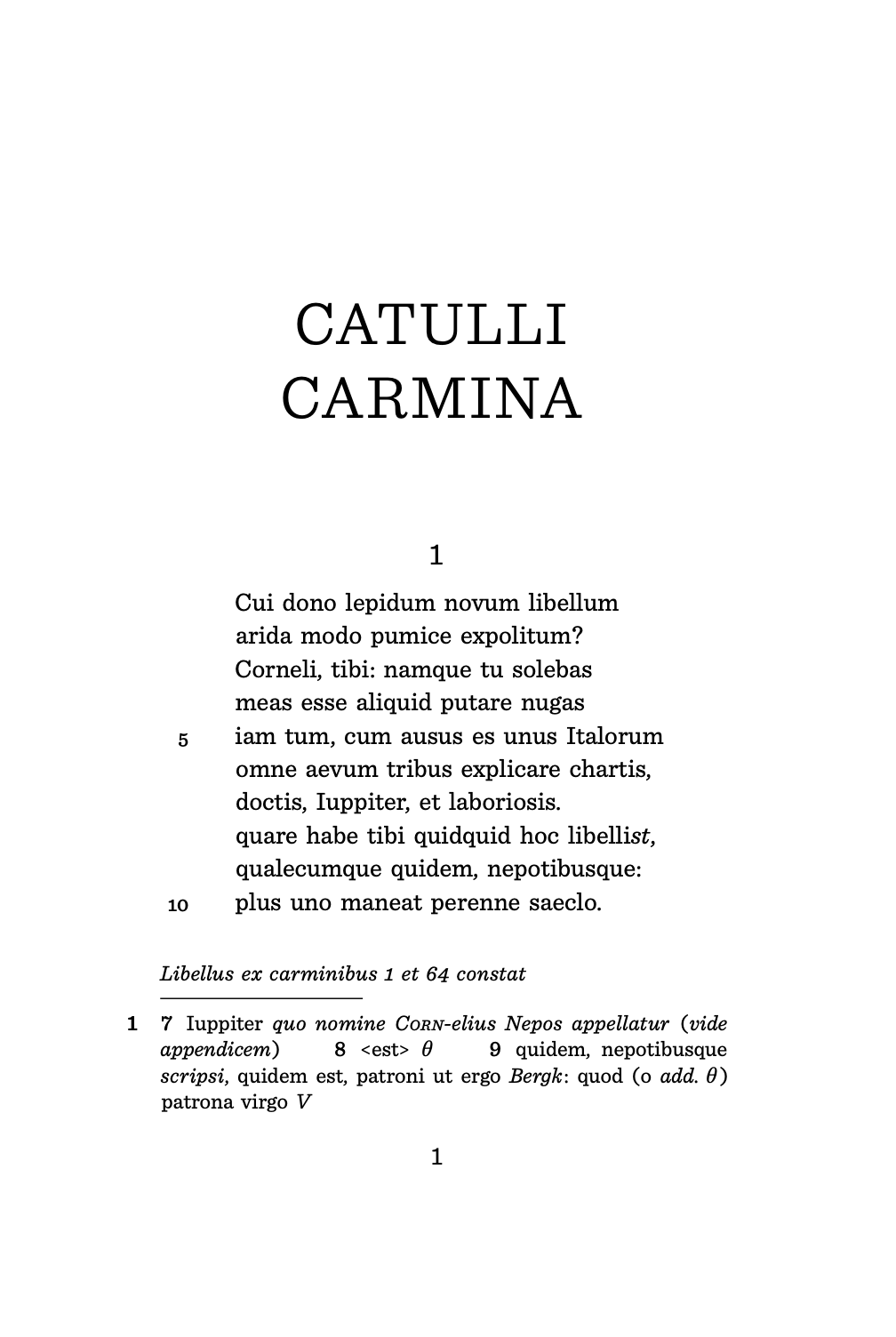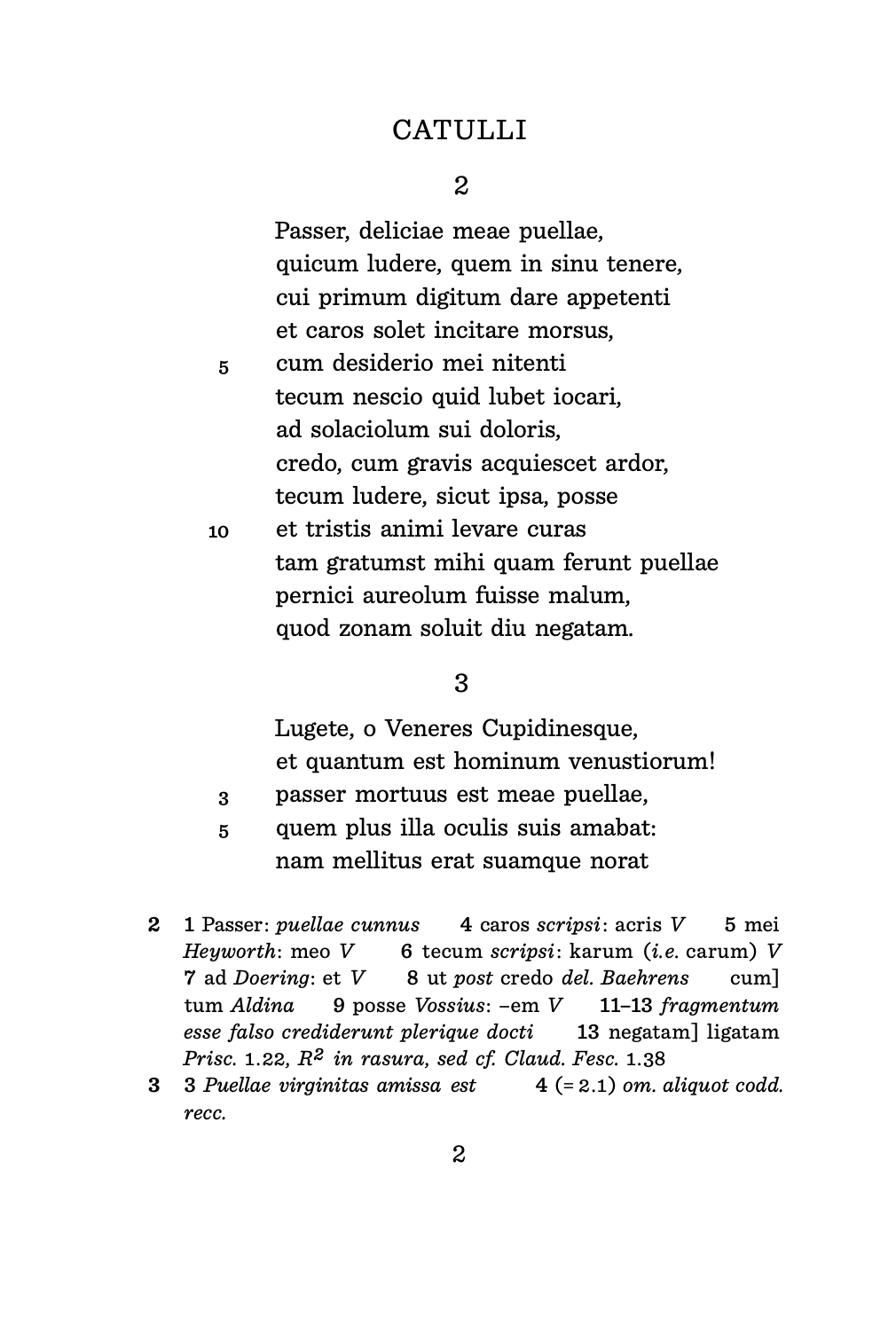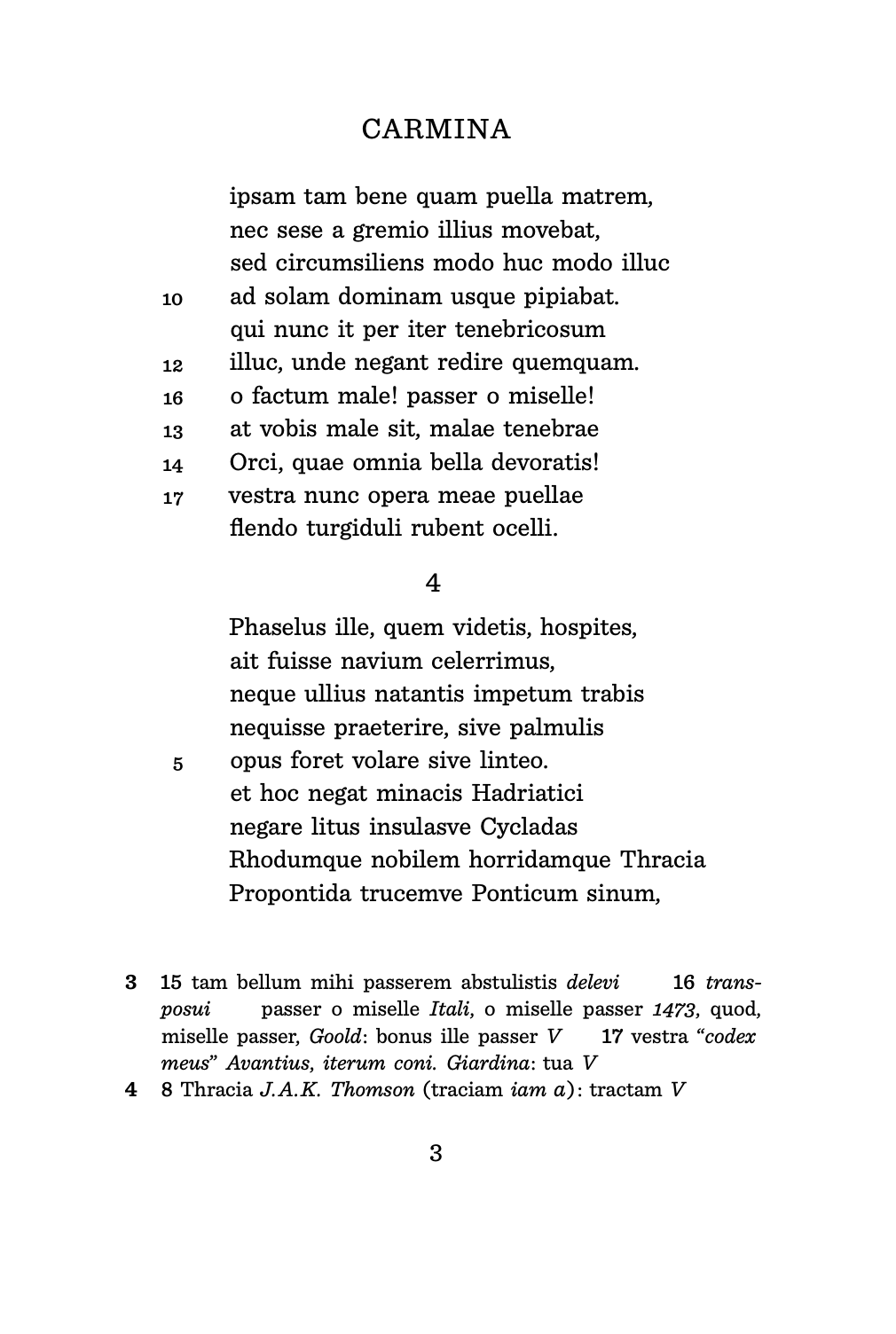Catulli Carmina
The Poems of Catullus have now been fully revised with hundreds of new emendations, many of them published here for the first time. A brief critical apparatus is also included with a good selection of the most important conjectures made by scholars today. As a result, the book offers the most up-to-date and accurate text of any Latin edition ever printed.
Catulli Carmina should be of great interest to classicists—both professional and amateur alike—and to all students and readers of Latin. It is an enjoyable, thought-provoking work of scholarship that sheds new light on matters of the text and challenges many long-held beliefs about Catullus and his poetry.
Share




Catulli Carmina
-
In this edition, many of the poems have been emended in such a way as to require new interpretations. The sparrow poems (2 & 3) are now about two newlyweds on their wedding night, before and after the consummation of their marriage. The first of the two poems is still as risqué as before, but for reasons other than those previously thought. Poem 32 reveals a comical situation, in which a persistent, would-be paramour is unable to take the hint that the girl of his desire has no interest in him. And poem 79 concerns the famous trial of impiety against Clodius Pulcher, who had violated the sanctity of the Bona Dea ceremony, while disguised as a woman. The composition of this last poem can be dated to the early months of 61 BC, after the incident, but sometime before the 75 jurors had been selected from the album of 900 men, in accordance with the lex Aurelia iudiciaria of 70 BC.
-
This is also the first modern edition to recognize a great many of the interpolations that have been written into the poems. Some of them added brief summaries, others helped explain the metaphoric language of the poet, and still others made attempts to sanitize verses that were considered indecent or even profane. All in all, most of these interpolations were written to make the poetry more accessible. In poem 34, for instance, a scribe wrote a stanza of his own as an introduction to alert the reader that the identity of Latonia was in fact the goddess Diana. These lines of verse (and many others like them) have now been removed from the poetic text and will be found in the critical apparatus.
-
And there remains another important way, in which this new edition can claim distinction. The emendation of poem 110—tu, quod promissis mentita mihi’s, inimica’s—provides the first real evidence that Catullus must have used the enclitic forms –s and –st for the verbs es and est. These forms have, therefore, been restored according to rules established by the editor after a careful examination of such enclitics in the manuscripts of Plautus, Terence and Lucretius.
Catulli Carmina
A NEW EDITION BY M. FLETCHER
Share








